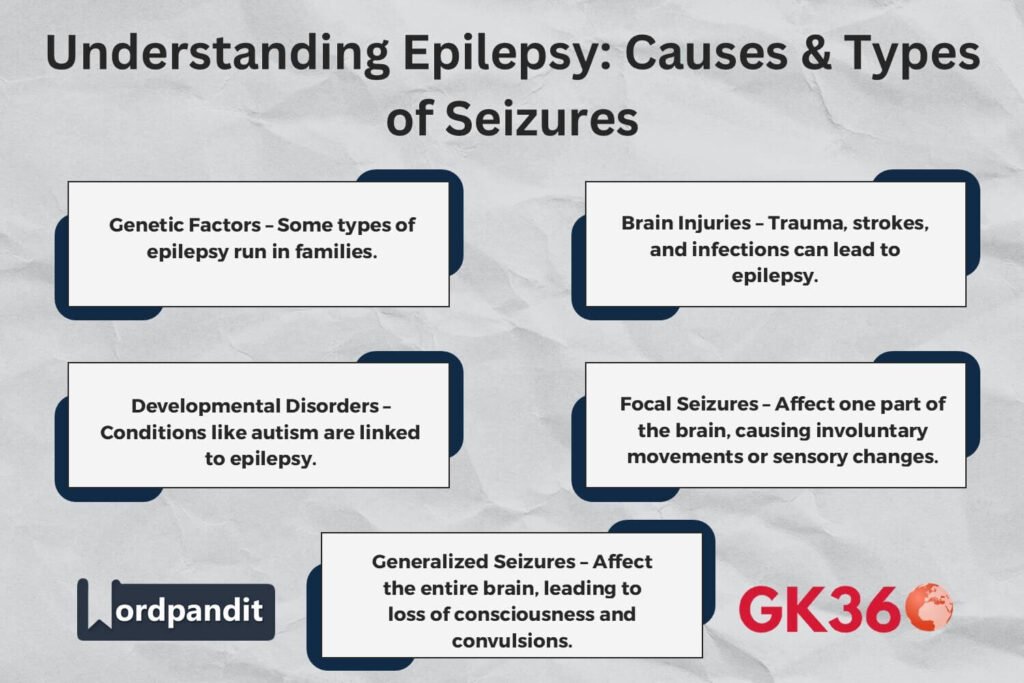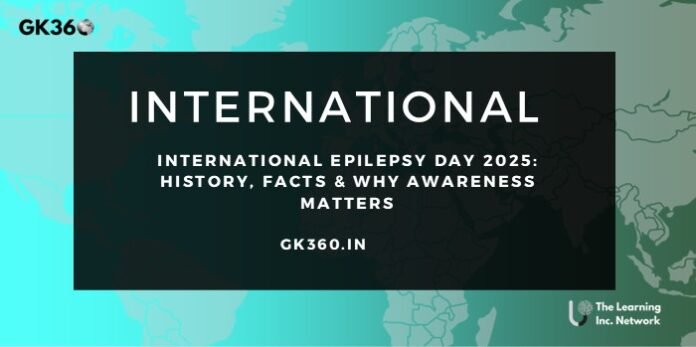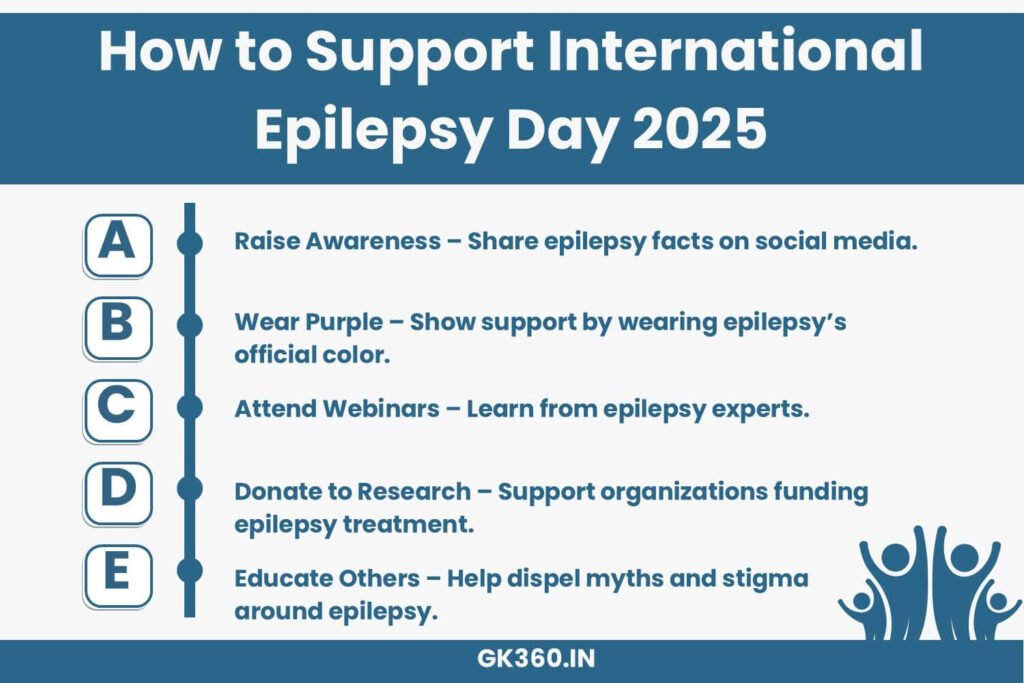International Epilepsy Day 2025: History, Facts & Why Awareness Matters
Introduction
International Epilepsy Day is observed annually on February 10 to raise global awareness about epilepsy, a neurological disorder affecting millions worldwide. This initiative is a collaboration between the International Bureau for Epilepsy (IBE) and the International League Against Epilepsy (ILAE) to educate the public, dispel myths, and promote better healthcare for individuals with epilepsy.
Epilepsy is one of the oldest-known medical conditions, with documented cases dating back thousands of years. However, for centuries, epilepsy was misunderstood and linked to supernatural beliefs. Today, thanks to medical advancements, we recognize epilepsy as a neurological disorder with effective treatment options.
This article explores the history, significance, and modern understanding of epilepsy, along with ways to participate in International Epilepsy Day 2025.

Table of Contents
- What is International Epilepsy Day?
- The Significance of International Epilepsy Day
- History of Epilepsy: From Ancient Myths to Modern Science
- Understanding Epilepsy: Causes, Symptoms & Treatments
- Why Raising Awareness is Crucial
- How to Participate in International Epilepsy Day 2025
- FAQs About Epilepsy
- Conclusion: Supporting a Seizure-Free Future
What is International Epilepsy Day?
International Epilepsy Day is a global observance aimed at:
- ✅ Raising awareness about epilepsy.
- ✅ Eliminating stigma and misconceptions.
- ✅ Encouraging governments to improve access to medical treatment.
- ✅ Supporting research for better epilepsy treatments.
Each year, organizations worldwide hold campaigns, educational programs, and social media initiatives to emphasize the need for greater understanding and research in epilepsy care.
The Significance of International Epilepsy Day
Epilepsy remains one of the most misunderstood neurological conditions. International Epilepsy Day helps:
- 📚 Educate the Public: By spreading scientific knowledge about epilepsy, people can understand its causes, symptoms, and treatment options.
- 🚫 Reduce Stigma: Historically, epilepsy has been associated with supernatural beliefs and discrimination.
- 🔬 Promote Medical Research: Increased awareness leads to better funding for research and medical advancements.
- 🤝 Support Patients and Families: Raising awareness ensures that epilepsy patients and their families receive the emotional and medical support they need.
History of Epilepsy: From Ancient Myths to Modern Science
🔹 Ancient Civilizations & Epilepsy
- 🟣 Ancient Mesopotamia (~2000 B.C.) – Epilepsy was believed to be caused by supernatural forces. Treatments included exorcisms and religious rituals.
- 🟣 Babylonian Civilization – Seizures were seen as a form of divine punishment, leading to stigma and fear.
- 🟣 Ancient Greece – Hippocrates, the “Father of Medicine,” was one of the first to challenge supernatural explanations, arguing that epilepsy was a brain disorder.
🔹 Middle Ages to Renaissance
During the Middle Ages, epilepsy was still associated with demonic possession, leading to cruel treatments such as exorcisms. However, the Renaissance brought a more scientific approach, with doctors beginning to study and classify seizures.
🔹 Modern Understanding of Epilepsy
By the 19th and 20th centuries, epilepsy was recognized as a neurological disorder. Advancements in neuroscience, electroencephalography (EEG), and medications revolutionized the treatment of epilepsy.
Understanding Epilepsy: Causes, Symptoms & Treatments
🔹 What Causes Epilepsy?
Epilepsy can develop due to various factors, including:
- 🧬 Genetics – Some types of epilepsy run in families.
- 🧠 Brain Injuries – Trauma, strokes, or infections like meningitis.
- 👶 Developmental Disorders – Conditions like autism can be associated with epilepsy.
- ❓ Unknown Causes – In many cases, the exact cause remains unidentified.
🔹 Types of Seizures
- 1️⃣ Focal Seizures – Affect one part of the brain, causing involuntary movements or sensory changes.
- 2️⃣ Generalized Seizures – Affect the entire brain, leading to loss of consciousness and convulsions.
- 3️⃣ Absence Seizures – Brief staring spells, common in children.
- 4️⃣ Tonic-Clonic Seizures – Severe seizures with muscle stiffness and convulsions.
🔹 Treatment Options
- ✅ Medications (Anti-Epileptic Drugs – AEDs) – Help control seizures in most patients.
- ✅ Surgery – For severe cases, surgery may remove the affected brain area.
- ✅ Ketogenic Diet – A high-fat, low-carb diet that has been beneficial for some epilepsy patients.
- ✅ Lifestyle Changes – Managing stress, regular sleep, and avoiding triggers can help.
Why Raising Awareness is Crucial
Despite medical advancements, many misconceptions about epilepsy persist. Raising awareness is essential to:
🔹 Encourage Early Diagnosis
- 🩺 Many epilepsy cases go undiagnosed due to lack of awareness.
🔹 Promote Inclusion
- 👩🏫 Educating society reduces discrimination against epilepsy patients.
🔹 Increase Funding for Research
- 💰 More awareness leads to better treatment options and medical advancements.
How to Participate in International Epilepsy Day 2025
Anyone can contribute to epilepsy awareness and support the cause. Here’s how you can participate:
📢 Share Epilepsy Facts & Infographics
- ✅ Post epilepsy awareness content on social media.
- ✅ Use hashtags like #EpilepsyAwareness and #SeizureFreeFuture.
🎗 Wear Purple
- ✅ Purple is the official color of epilepsy awareness.
📖 Attend Webinars & Educational Events
- ✅ Join online discussions with medical professionals and advocates.
💰 Donate to Epilepsy Research Organizations
- ✅ Support foundations working towards better treatments and awareness.
🗣 Educate Your Community
- ✅ Talk to friends and family to dispel common epilepsy myths.
FAQs About Epilepsy
1️⃣ Can epilepsy be cured?
✅ Epilepsy has no universal cure, but with the right treatment, 70% of people with epilepsy can live seizure-free.
2️⃣ Can people with epilepsy live normal lives?
✅ Yes! With proper medication and lifestyle adjustments, most epilepsy patients lead healthy, active lives.
3️⃣ Is epilepsy contagious?
✅ No. Epilepsy is a neurological condition, not an infectious disease.
4️⃣ What should I do if someone has a seizure?
- 🆘 Stay calm and protect them from injury.
- 🔄 Turn them on their side to prevent choking.
- 🚫 Do NOT put anything in their mouth.
- 📞 Call emergency services if the seizure lasts more than 5 minutes.
5️⃣ Can epilepsy affect children?
✅ Yes. Epilepsy can develop in children, adults, and the elderly. However, many children outgrow epilepsy.
Conclusion: Supporting a Seizure-Free Future
International Epilepsy Day 2025 serves as a global platform to educate, empower, and support millions of people affected by epilepsy. By acknowledging the history, medical advancements, and social challenges associated with epilepsy, we can create a more inclusive and informed society.
Key Takeaways
| Aspect | Details |
|---|---|
| Date | February 10, 2025 |
| Purpose | Raise awareness, eliminate stigma, and promote epilepsy research |
| Historical Background | Epilepsy was historically misunderstood, often linked to supernatural beliefs |
| Modern Understanding | Recognized as a neurological disorder with treatment options like medication and surgery |
| Common Seizure Types | Focal, generalized, absence, and tonic-clonic seizures |
| Awareness Importance | Helps with early diagnosis, reduces stigma, and promotes medical funding |
| Participation Methods | Sharing facts, wearing purple, attending events, donating, and educating others |
Related Terms:
- InternationalEpilepsyDay2025
- EpilepsyAwareness
- SeizureFreeFuture
- PurpleForEpilepsy
- EpilepsyFacts
- EpilepsyResearch
- SupportEpilepsy
- NeurologicalHealth
- EpilepsyTreatment
- EndEpilepsyStigma






